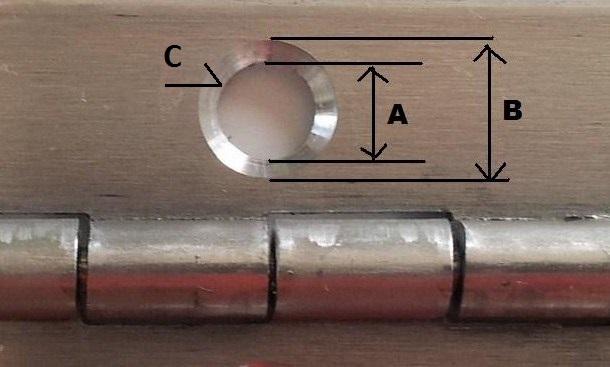Hinges and Hardware 101 - Countersunk holes

The first way countersunk holes can be dimensioned is by calling out the screw size; #6 FHS, #8 FHS or any number of different sizes. That tells the users which size screw they need to buy to fit that particular hole. The second way is with actual physical dimensions. Take a look at this picture to see the 3 measurements you'll need to be familiar with
A - The inside diameter of the hole. This is the maximum diameter a screw could be to even fit into the hole.
B - The outside diameter of the hole. Not as important to the screw size, but the diameter of the flat head is most likely within this circle so it will lay flat.
C - Angle of the countersink. Necessary to match this with the screw head angle so it fits securely within the countersink.
You would need to dimension at least two of these three measurements to know what size screw you would need for your countersunk hole.
With a myriad of hole placements, sizes and types, Guden can easily custom run just about any pattern you would like. Check out our Custom Hinge Tool to help guide you to the exact hinge and hole pattern, including countersunk holes. that meets your specific requirements.



